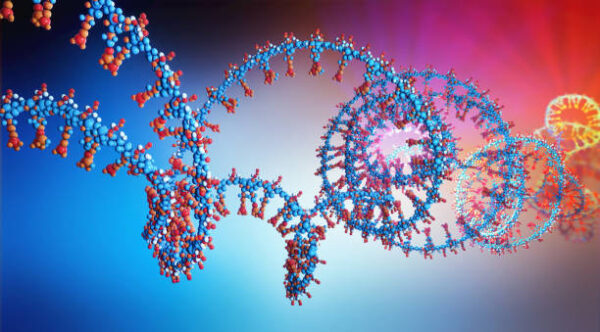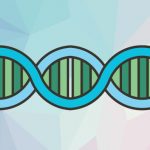Magnetic nanoparticles are characterized of having both magnetic particles and nanoparticles, which refer to particles ranging between 1 and 100 nanometers in diameter that produce a response if subjected to magnetic field. One of the most basic substances in life is nucleic acid, which has very important biological functions, such as storage and transmission of genetic information. Polymerase chain reaction (PCR) is considered to be the gold standard for detection of nucleic acid. Yet, it has some limitations such as time-consuming, laborious, large and expensive PCR detection equipment, and the need for well-trained and professional operators. Thus, it is very important to have economical and fast nucleic acid detection equipment and technology. Magnetic nanoparticles have high binding rates with detection substances, high surfaces areas to volume ratio, and are able to make magnetically controllable aggregation and dispersion, allowing preconcentration, purification and separation of nucleic acid in an easy and simple way.
Magnetic nanoparticles have good dispersibility, allowing them to bind biomolecules effectively and quickly. They have the advantage of reversibly bind to biomolecules, and controllable dispersion and aggregation. Without external magnetic field, the particles are uniformly suspended in solution and nonmagnetic. However, in the presence of an external magnetic field, the particles are magnetic and can be separated. Use of magnetic nanoparticles in nucleic acid detection has the advantages of high specificity, good reproducibility, and rapid separation. Magnetic beads are a valuable tool for extraction of nucleic acid. Coupling of magnetic characters with ligands in magnetic beads facilitates the separation and purification of nucleic acid in a specific and highly efficient way.
Some major inventions
- In 2016, Pang and colleagues developed a functionalized Fe3O4@Ag magnetic nanoparticle biosensor for microRNA capture and ultra-sensitively detection from total RNA in cancer cells.
- Also, in 2016, Wu and colleagues designed a new type of automatic sample processing device based on magnetic separation for isolation and extraction of both RNA and DNA, which could facilitate sample preparation in the field with no need to transfer the plate to any additional equipment.
- In 2017, Chen and colleagues developed a paper-based analytical device for colorimetric detection of DNA, through detection of the specific recognition of nucleic acid via magnetic nanoparticles separation and hybridization chain reaction induced by target DNA.
- Also, in 2017, Wang and colleagues developed magnetic nanoparticles to simultaneously extract RNA and DNA from cancer cells. This method is convenient, easy automation, and low cost. Li and colleagues developed a rapid and high-quality universal nucleic acid extraction kit based on magnetic separation, facilitation the extraction of nucleic acid efficiently and programmatically.
- In 2018, Tavallaie and colleagues proposed that electric-field-induced reconfiguration of a network of gold-coated magnetic nanoparticles modified by probe DNA (DNA-Au@ magnetic nanoparticles) could help in making a highly sensitive sensor for direct analysis of nucleic acids in complex samples such as whole blood.






